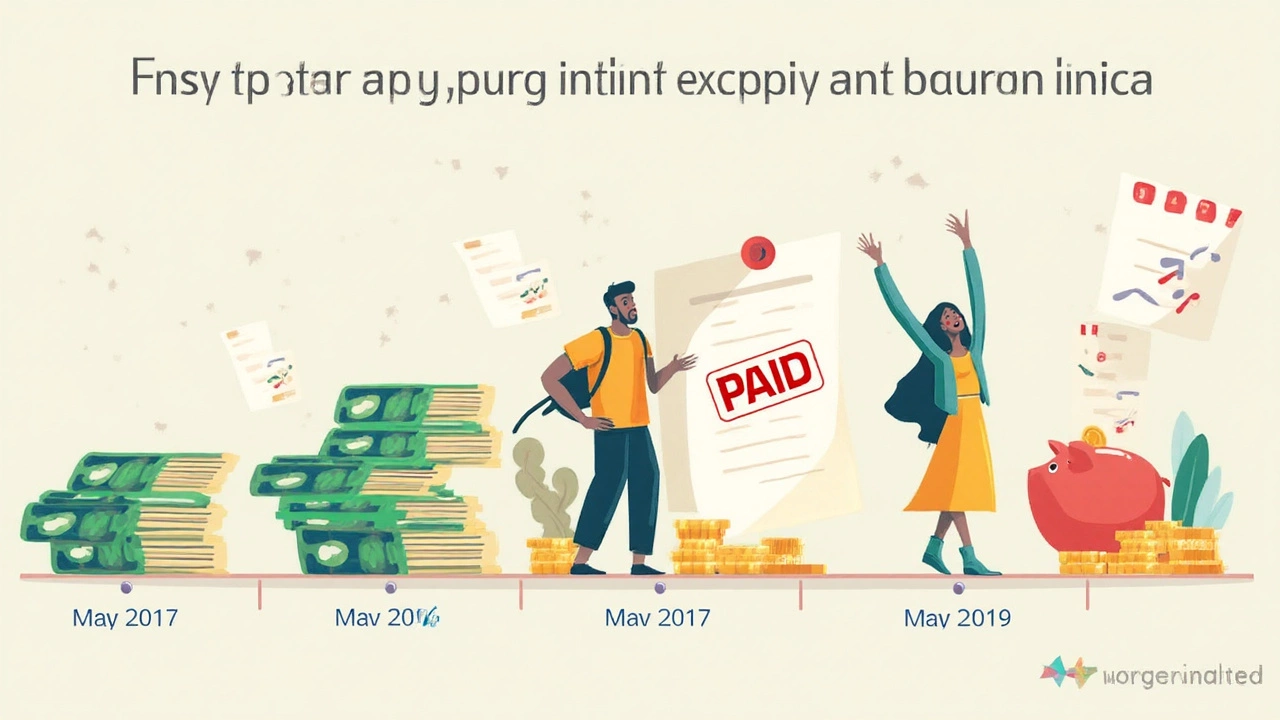Can a little habit—like paying one more EMI each month—shake up your whole loan journey? Turns out, it’s one of the sneakiest yet most effective weapons in your financial toolkit. Most folks focus on interest rates and tenure, but overlook how something as simple as paying one extra EMI regularly can quietly erase years off your debt and save you big bucks. Imagine opening your loan statement and seeing the closing date racing toward you, not dragging away in the rearview. Some people see their 20-year loan shrink to 11 years just by chipping in extra EMIs. Sounds wild, right? But how does the math shake out? Here’s a step-by-step, honest look at exactly what paying an extra EMI actually does—right down to the last rupee saved.
How Regular EMIs Work—and Why Timing Is Everything
Understanding EMI (Equated Monthly Installments) is key before you mess with the formula. When you take a loan—like a home loan for, say, ₹40 lakh at 8% over 20 years—your EMI covers two things: the interest and the principal. At the start, you pay a ton of interest and chip away only a little at the principal. It’s called front-loaded interest, and banks love it because they collect most of their profit upfront.
The math behind this: In the first year, nearly 80% of your EMI is just interest. Every month, as you clear some principal, the interest on your next EMI shrinks just a tad—but the change is glacial unless you intervene. That’s why, even after 10 years, many borrowers are shocked to see how much principal still remains. The EMI is fixed, but the split between interest and principal quietly shifts over time in your favor.
Here’s a real example for a loan of ₹40 lakh at 8% interest, with a 20-year tenure. Your EMI might be around ₹33,458 per month. Over 20 years, you end up paying ₹80,29,920 total—almost double the principal! The numbers hit you hard, especially when you see how little the early payments eat into your principal. Most banks show this exact breakdown in their statements if you ever dig around online.
The Magic of One Extra EMI: Crush Interest, Cut Years
Now, imagine you start paying just one extra EMI—every single month. Instead of ₹33,458, you pay ₹66,916. That’s a stretch, sure, but the results will blow your mind. The extra EMI goes straight toward the principal, hammering down the balance, which shrinks future interest charges. Every month you do this, the snowball gets bigger.
The trick here: Every extra rupee paid early does far more work because the outstanding principal is still huge, and therefore, the upcoming interest savings are massive. It’s like knocking over the first domino in a long line—if you catch the momentum early, the whole thing collapses much faster.
Let’s see what happens with real numbers:
| Loan Amount | Interest Rate | Tenure | EMI (Monthly) | Total Interest (Regular EMIs) | Loan Duration (1 Extra EMI/Month) | Interest Paid (1 Extra EMI/Month) |
|---|---|---|---|---|---|---|
| ₹40,00,000 | 8% | 20 years | ₹33,458 | ₹40,29,920 | ~6 years, 8 months | ~₹9,12,800 |
That’s not a typo. With one extra EMI every month, a 20-year loan can be gone in less than 7 years—and the total interest plummets by about 77%. Suddenly those coffee break savings look a lot more powerful, don’t they?
Here’s the real magic: This works across most types of loans—home, personal, education. Many people spread their money into investments hoping to beat loan rates, but few realize how risk-free and guaranteed these interest savings are if they just attack their loan head-on.

Where Does the Money Go? Explaining the Mechanics
Most people panic thinking banking systems are impossible to understand. But this part is simple. Whenever you pay extra—over and above your regular EMI—it’s treated as principal prepayment. This means from the very next month, your outstanding balance is lower, so the next interest calculation uses this new, smaller amount.
Let’s say after your first regular EMI, you toss in an extra ₹33,458. That money goes 100% to the principal. Your loan now shrinks faster, and from the very next EMI, the interest portion of each payment gets recalculated lower. Every time you pay an extra EMI, you accelerate out of the interest cycle that banks set up for you.
Just be careful—check your bank’s rules. Some banks auto-reduce your tenure, which is what you want. Others might lower the EMI instead, which slows down the impact. Always instruct your bank in writing to keep the EMI same and cut the tenure for max savings.
Another thing people miss: Many banks allow unlimited prepayments now, with no penalty, especially for home loans taken after 2019. But check for hidden service charges, especially on personal and NBFC loans. If there’s a prepayment penalty, do the math—is it still worth it? Usually, yes, but it pays to check.
One other tip: Always mention "principal prepayment" in your payment description and get written confirmation from your bank that your extra payments are being applied correctly.
Side Effects No One Talks About: Credit Score, Flexibility, and Cash Flow
Cutting years off your loan and slashing interest is great, but does paying that extra EMI impact your credit score? Here’s the cool part: Your credit score either stays solid or improves. Banks love borrowers who prepay but never skip EMIs. Your credit report will look even better for future loans if you finish current ones early—it tells lenders you’re lower risk.
But remember: Committing to double EMIs each month impacts monthly cash flow. It only works if you have a stable income or a second source of cash, like a spouse’s salary, a thriving side hustle, or regular bonuses. Don’t empty your emergency fund just to prepay—it’s there for actual emergencies. Split windfalls like bonuses, yearly increments, or freelance gigs into "extra EMI pots." That way you’re not caught short.
Here’s another little-known benefit: Financial freedom comes sooner. Imagine your loan ends 10 years early—that’s 10 years with no EMI stress, more investing, maybe early retirement, or finally taking that travel sabbatical. Money saved on EMI now can power future dreams.
One thing to watch: If you invest the same amount in, say, stock markets, will you beat your loan rate? Usually, you’d need very high, consistent returns—hard to guarantee. Saving 8% or more, risk-free, by blasting your loan is an easy win. But each situation is unique; if your investments consistently beat your loan rate even after taxes, consider splitting the strategy.

Real-Life Tips to Pull Off the Extra EMI Trick
Wondering how regular folks actually pull this off? You don’t need to be rich—just a little creative. Here are some proven, real-life strategies:
- Automate your extra EMI: Set up a standing instruction so the amount leaves your account right after payday. Make it invisible, and you won’t miss it.
- Channel windfalls: Bonuses, investments maturing, or freelance income can be funneled into extra EMIs instead of short-term splurges. Even one-off big payments can shave a year off your term.
- Yearly reset: If monthly extra EMIs are tough, try making 12 extra EMIs as a lump sum annually. The math works out even better for interest saved.
- Use tax refunds: Instead of spending your income tax refund, dump it into the loan. One refund can accelerate your loan finish line.
- Make festivals count: When Diwali, Eid, or Christmas roll around with those cash gifts, add them to the prepayment.
Don’t forget small wins add up. Even if you can’t do a full extra EMI, any amount over the minimum slashes principal and tricks the math in your favor.
Bottom line? Banks don’t exactly advertise this trick—because, frankly, it takes their long-term profits out of the equation. But if you can swing an extra EMI each month or even every quarter, you’re basically turning the amortization schedule to your advantage. Double-check your bank’s prepayment rules, push to keep your EMI amount steady (so the tenure drops), and watch your loan shrink at rocket speed. Your future self—and your wallet—will thank you.
